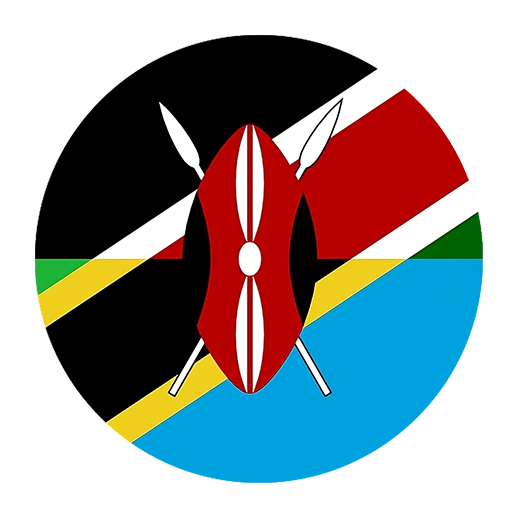Learning a new language opens doors to new cultures, experiences, and perspectives. Swahili, a Bantu language widely spoken in East Africa, is no exception. One fascinating aspect of Swahili is its use of demonstrative adjectives, which are essential for effective communication. This guide will delve into Swahili demonstrative adjectives, providing practical examples and explanations to help you understand and use them confidently.
Understanding Demonstrative Adjectives
Demonstrative adjectives are words that point to specific nouns, indicating their location relative to the speaker. In English, these are words like “this,” “that,” “these,” and “those.” In Swahili, demonstrative adjectives serve a similar function but are more intricate due to the noun class system.
The Swahili Noun Class System
Before diving into demonstrative adjectives, it’s crucial to understand the Swahili noun class system. Swahili nouns are grouped into classes, each with its own prefixes and agreement patterns. There are around 16 noun classes, but for simplicity, we’ll focus on the most common ones:
1. **M-Wa Class**: For people and animals (e.g., mtu (person), watu (people)).
2. **Ki-Vi Class**: For objects and tools (e.g., kitabu (book), vitabu (books)).
3. **N Class**: For many other nouns, including animals, body parts, and abstract concepts (e.g., ndizi (banana), nyumba (house)).
4. **J-Ma Class**: Often for fruits, natural phenomena, and other objects (e.g., tunda (fruit), matunda (fruits)).
Each noun class has its own set of demonstrative adjectives. Let’s explore these in detail.
Demonstrative Adjectives in Swahili
Swahili demonstrative adjectives are divided into three categories based on the proximity of the noun to the speaker:
1. **Close to the Speaker (This/These)**
2. **Far from the Speaker (That/Those)**
3. **Very Far from the Speaker (Yonder)**
Close to the Speaker
When referring to something close to the speaker, Swahili uses specific demonstrative adjectives for each noun class. Here are the demonstrative adjectives for “this” and “these”:
1. **M-Wa Class**:
– Singular: *huyu* (this)
– Plural: *hawa* (these)
Example:
– Huyu ni mwanafunzi. (This is a student.)
– Hawa ni wanafunzi. (These are students.)
2. **Ki-Vi Class**:
– Singular: *hiki* (this)
– Plural: *hivi* (these)
Example:
– Hiki ni kitabu. (This is a book.)
– Hivi ni vitabu. (These are books.)
3. **N Class**:
– Singular: *hii* (this)
– Plural: *hizi* (these)
Example:
– Hii ni ndizi. (This is a banana.)
– Hizi ni ndizi. (These are bananas.)
4. **J-Ma Class**:
– Singular: *hili* (this)
– Plural: *haya* (these)
Example:
– Hili ni tunda. (This is a fruit.)
– Haya ni matunda. (These are fruits.)
Far from the Speaker
When referring to something farther from the speaker, Swahili uses different demonstrative adjectives:
1. **M-Wa Class**:
– Singular: *huyo* (that)
– Plural: *hao* (those)
Example:
– Huyo ni mwanafunzi. (That is a student.)
– Hao ni wanafunzi. (Those are students.)
2. **Ki-Vi Class**:
– Singular: *hicho* (that)
– Plural: *hivyo* (those)
Example:
– Hicho ni kitabu. (That is a book.)
– Hivyo ni vitabu. (Those are books.)
3. **N Class**:
– Singular: *hiyo* (that)
– Plural: *hizo* (those)
Example:
– Hiyo ni ndizi. (That is a banana.)
– Hizo ni ndizi. (Those are bananas.)
4. **J-Ma Class**:
– Singular: *hilo* (that)
– Plural: *hayo* (those)
Example:
– Hilo ni tunda. (That is a fruit.)
– Hayo ni matunda. (Those are fruits.)
Very Far from the Speaker
When referring to something very far from the speaker, often out of sight or yonder, Swahili uses yet another set of demonstrative adjectives:
1. **M-Wa Class**:
– Singular: *yule* (yonder)
– Plural: *wale* (yonder, plural)
Example:
– Yule ni mwanafunzi. (Yonder is a student.)
– Wale ni wanafunzi. (Yonder are students.)
2. **Ki-Vi Class**:
– Singular: *kile* (yonder)
– Plural: *vile* (yonder, plural)
Example:
– Kile ni kitabu. (Yonder is a book.)
– Vile ni vitabu. (Yonder are books.)
3. **N Class**:
– Singular: *ile* (yonder)
– Plural: *zile* (yonder, plural)
Example:
– Ile ni ndizi. (Yonder is a banana.)
– Zile ni ndizi. (Yonder are bananas.)
4. **J-Ma Class**:
– Singular: *lile* (yonder)
– Plural: *yale* (yonder, plural)
Example:
– Lile ni tunda. (Yonder is a fruit.)
– Yale ni matunda. (Yonder are fruits.)
Practical Usage Tips
Understanding the different forms of demonstrative adjectives is one thing, but using them effectively in conversation and writing is another. Here are some practical tips to help you master Swahili demonstrative adjectives:
Practice with Real-Life Examples
One of the best ways to internalize these demonstrative adjectives is by practicing with real-life examples. Try to describe objects around you using the correct demonstrative adjectives. For instance, if you see a book on your desk, you can say, “Hiki ni kitabu” (This is a book). If you see a group of people in the distance, you can say, “Wale ni watu” (Yonder are people).
Engage in Conversations
Engaging in conversations with native Swahili speakers or fellow learners is an excellent way to practice demonstrative adjectives. When speaking, make a conscious effort to use the correct forms. For example, if you’re at a market and want to buy some bananas, you can ask the vendor, “Hizi ndizi ni bei gani?” (How much are these bananas?).
Use Visual Aids
Visual aids such as flashcards can be helpful when learning demonstrative adjectives. Create flashcards with pictures of objects and their corresponding Swahili demonstrative adjectives. Review them regularly to reinforce your memory.
Listen and Observe
Listening to native Swahili speakers and observing how they use demonstrative adjectives in context can be incredibly beneficial. Watch Swahili movies, listen to Swahili music, and follow Swahili-speaking social media accounts. Pay attention to how demonstrative adjectives are used in different situations.
Practice with Exercises
To solidify your understanding, practice with exercises that involve filling in the blanks with the correct demonstrative adjectives. For instance:
1. ___ ni gari. (This is a car.)
2. ___ ni magari. (Those are cars.)
3. ___ ni nyumba. (Yonder is a house.)
4. ___ ni ndizi. (These are bananas.)
Answers:
1. Hili
2. Hayo
3. Ile
4. Hizi
Common Mistakes to Avoid
As with any language learning process, there are common mistakes that learners often make when using Swahili demonstrative adjectives. Being aware of these pitfalls can help you avoid them:
Confusing Singular and Plural Forms
One common mistake is confusing singular and plural forms of demonstrative adjectives. Remember that each noun class has distinct forms for singular and plural. For example, *huyu* (this) is singular in the M-Wa class, while *hawa* (these) is plural.
Using the Wrong Noun Class
Another mistake is using the wrong demonstrative adjective for a noun class. Ensure you know the noun class of the noun you are referring to and use the corresponding demonstrative adjective. For instance, *hiki* (this) is for the Ki-Vi class, not the M-Wa class.
Forgetting the Context of Proximity
It’s essential to consider the context of proximity when choosing demonstrative adjectives. Using *hii* (this) instead of *hiyo* (that) can change the meaning of your sentence. Always think about whether the noun is close to you, far from you, or very far.
Advanced Usage and Variations
As you become more comfortable with basic demonstrative adjectives, you can explore advanced usage and variations. Swahili, like many languages, has nuances and idiomatic expressions that can add depth to your communication.
Emphasizing Distance
In some cases, you might want to emphasize the distance of an object. You can do this by combining demonstrative adjectives with other words. For example:
– Huyu hapa (This one here)
– Huyo pale (That one there)
– Yule kule (Yonder one over there)
Demonstrative Pronouns
In addition to demonstrative adjectives, Swahili also has demonstrative pronouns, which replace nouns rather than modify them. For example:
– Huyu ni mzuri. (This one is good.)
– Hicho ni kikubwa. (That one is big.)
– Ile ni nzuri. (Yonder one is beautiful.)
Idiomatic Expressions
Swahili has idiomatic expressions that use demonstrative adjectives in unique ways. Learning these expressions can enhance your language skills and cultural understanding. For example:
– Huyu hapa ni nani? (Who is this here?)
– Hicho kitabu ni changu. (That book is mine.)
– Yale mambo ni mazuri. (Those things are good.)
Conclusion
Mastering Swahili demonstrative adjectives is a crucial step in becoming proficient in the language. Understanding the noun class system and the different forms of demonstrative adjectives for proximity will significantly enhance your ability to communicate effectively.
Remember to practice regularly, engage in conversations, and immerse yourself in Swahili-speaking environments. By doing so, you’ll develop a deeper understanding of how demonstrative adjectives are used in context and avoid common mistakes.
As you continue your journey in learning Swahili, embrace the richness of the language and the cultural insights it offers. Demonstrative adjectives are just one piece of the puzzle, but they play a vital role in helping you express yourself clearly and accurately. Happy learning!

